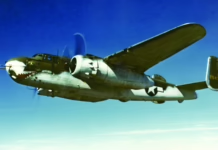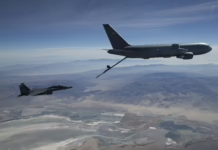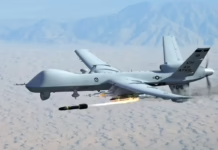When RAF fighters shattered its myth in 1940, German engineers fought desperately to keep the iconic dive-bomber relevant—transforming it from terror weapon to armored tank destroyer in a losing race against obsolescence.
The Junkers Ju 87 Stuka stands as one of aviation history’s most recognizable aircraft—not for its elegant lines or impressive performance, but for its distinctive gull wings, fixed landing gear, and the blood-chilling wail of its siren as it plummeted toward targets. Yet behind that terrifying image lay a more complex story: a continuous struggle by German engineers to keep an inherently vulnerable design relevant against increasingly lethal defenses. From its debut over Spain to its final desperate transformation into an anti-armor platform on the Eastern Front, the Stuka’s evolution reveals both the ingenuity and desperation of wartime aircraft development.
Proving Ground: Spain and the A-Variant
The Stuka’s operational story began not over Poland in 1939, but in the skies above Spain’s civil war. The V4 prototype, designated Ju 87A-0, arrived in November 1936, followed by three production Ju 87A-1s in January 1938. These aircraft formed Stuka 88, operating as part of the Condor Legion’s K/88 unit. Spain offered the Luftwaffe an invaluable testing ground—but one that would ultimately prove misleading.
The A-variant represented the Stuka’s baseline configuration: a single-engine dive-bomber designed around the concept of precision attacks. In Spain, these early Stukas refined pinpoint bombing techniques without facing modern fighter opposition or effective anti-aircraft defenses. The lessons learned seemed to validate the dive-bomber concept, but they masked a critical vulnerability that would emerge only when confronted with first-rate opposition.
The B-Variant: Adding the Scream
October 1938 brought a significant upgrade when five Ju 87B-1s replaced the earlier A-models in Spain. This B-version became the first mass-produced Stuka variant, and it introduced modifications that would define the aircraft’s identity.
The most significant mechanical improvement came from the installation of the Jumo 211D engine, offering enhanced power and reliability. Engineers redesigned the fuselage for improved aerodynamics and strengthened the undercarriage to handle higher operational stresses. But the B-variant’s most psychologically effective feature was decidedly low-tech: propeller-driven sirens mounted on the landing gear.
These Jericho-Trompeten (Jericho Trumpets) produced the Stuka’s characteristic screaming wail during dive attacks. The sound served no tactical purpose beyond terror—it warned targets of the incoming attack—but its psychological impact proved undeniable. The scream became synonymous with German air power during the early war years, amplifying the Stuka’s reputation far beyond its actual capabilities.
The B-variant proved devastatingly effective during the September 1939 Polish campaign. The first bombs fell from 3 Staffel/Stukageschwader 1 (3./StG 1), while 4 Staffel (Stuka)/TrägerGruppe 186, commanded by Hauptmann Erich Blattner, claimed some of the first ships sunk by aircraft. This latter unit had been intended to operate from the German aircraft carrier Graf Zeppelin, but when that ship never became operational, its Stukas went on to form III Gruppe/StG 1.
Poland confirmed the Stuka’s effectiveness in close support ground attack roles, backing German troops with remarkable accuracy. Losses remained minimal—a testament to the aircraft’s capabilities but also to the relatively modest defenses it faced.

Extended Range: The R-Variant for Norway
The Luftwaffe’s next challenge—the invasion of Norway in April 1940—demanded a new capability: extended range for operations over vast maritime distances. Engineers responded with the Ju 87R (R for Reichweite, or range), a modification of the B-1 that added increased oil capacity and two 300-liter drop tanks.
For Operation Weserübung, I./StG 1 deployed these long-range variants from Kiel-Holtenau. On April 9, 1940, the Gruppe struck Oscarsborg Fortress before relocating to Stavanger-Sola and Oslo-Fornebu, shifting focus to anti-shipping operations. Later R-versions incorporated additional refinements: strengthened airframes to handle the increased weight and newer powerplants for improved performance.
The Norwegian campaign showcased both the Stuka’s capabilities and its emerging vulnerabilities. On April 30, 1940, the Gruppe sank anti-submarine trawlers Siretoko, Jardine, and Warwickshire, while HMS Bittern suffered severe damage, apparently from an attack by Oberleutnant Elmar Schaefer of 1 Staffel. That same date, Feldwebel Kurt Zube and Feldwebel Albert Rüdiger were credited with sinking a “flak cruiser” off Namsos.
The successes continued into May. On the 3rd, Hauptmann Fritz Hozzel led attacks that sank the French destroyer Bison and HMS Afridi during the Namsos evacuation. Bison’s forward magazine exploded, killing 108 crew members, while Afridi, which had rescued Bison survivors, went down with 63 seamen and soldiers lost.
Yet Norway also provided warning signs. On May 27, Feldwebel Kurt Zube was shot down by Flight Lieutenant Caesar Hull of 263 Squadron—though he and his gunner were rescued by German troops. More ominous losses followed. On June 2, Oberleutnant Heinz Böhme and Unteroffizier Horst Schamp from 2 Staffel were killed, shot down by Sergeant Herbert Kitchener and Flight Lieutenant Alvin Williams of 263 Squadron.
The campaign succeeded, but enemy defenses, while not yet potent enough to seriously challenge the Ju 87s, had inflicted losses that foreshadowed greater problems ahead.
France: The First Real Test

The Stuka crews quickly applied lessons from Poland and Norway during the May 1940 offensive in France and the Low Countries. Their precision attacks and close coordination with ground forces, particularly armored units, proved instrumental to the Blitzkrieg’s success. Yet Stuka losses climbed notably higher than before.
May 12, 1940, saw StG 2 lose three Ju 87s to Hawker Hurricanes of 3 Squadron, while I./StG 76 lost one Stuka with four more damaged to Curtiss Hawks of Groupe de Chasse I/5. The following day brought four losses to flak and fighters plus another damaged. May 14 proved catastrophic: thirteen Stukas shot down with six more damaged.
Among the fallen was Oberst Günther Schwartzkopf, Kommodore of StG 77 and regarded as the “father” of the Stuka. His Ju 87B-2 was either shot down by flak or Hurricanes while attacking armor southwest of Le Chesne at 1545 hours on May 14, 1940. The aircraft crashed at Châtillon-sur-Bar, killing Schwartzkopf and his Bordfunker (radio operator) Feldwebel Heinz Follmer. Schwartzkopf received the Ritterkreuz posthumously in November 1940.
By the Battle of France’s end, approximately one-third of the Luftwaffe’s Stukas had been shot down or damaged. The aircraft’s vulnerability to modern fighters was becoming undeniable, yet Ju 87 crews were now expected to attack mainland Britain—a decision that would prove disastrous.
The Breaking Point: Battle of Britain
Even before the Battle of Britain officially began on July 10, 1940, Stukas enjoyed early successes against shipping. July 4 proved particularly productive: in two attacks, I./StG 2 and III./StG 51 sank four freighters in the Channel. Then, attacking Portland, III./StG 51 sank the 5,500-ton anti-aircraft ship HMS Foylebank, resulting in 176 of 298 crew losing their lives. Just one Stuka was lost during the entire day.

Oberleutnant Klaus Ostmann of 8./StG 1 described the intensity: “It is hard to spot a ship at sea-level, but the formation had already started to dive. After all the tension, a feeling of relief comes over you. With determination, you go after the target and there is only one aim—to hit it. One does not notice the flak which flies by and bursts on both sides of you. Now I have picked up my target, drop the bombs and by taking wild evasive actions, I follow the formation which is already joining up again.”
“But now my gunner is firing and I see the eight trails of a Spitfire’s tracer bullets trying to reach me again and again like ghostly fingers. A few times you hear a crack, but the plane’s fuselage is wide and if nothing vital has been hit, the faithful Stuka can take a lot of hits without any problems. I succeed in shaking off the last attacking fighter and without any problems I land at an advanced airfield.”
Ostmann would be badly wounded on August 8, 1940, in another convoy attack.
When Stuka operations shifted to RAF airfields and radar stations on August 13, losses escalated sharply. Six went down on the 13th targeting Warmwell, Yeovil, and Detling. Another six plus one damaged fell on the 15th attacking Lympne, Hawkinge, Warmwell, and Yeovil. The 16th saw nine shot down and seven damaged hitting Tangmere, Gosport, Lee-on-Solent, and Ventnor radar station. August 18 brought the worst single-day toll: sixteen lost with six more damaged striking Thorney Island, Ford, Gosport, and the Poling radar station.
The verdict was inescapable: without effective fighter escort, Stukas were extremely vulnerable to RAF fighters. The Ju 87 played no further active role in the Battle of Britain. Although small numbers reappeared briefly in November 1940 and occasional nocturnal roles, Stukas never again operated over the United Kingdom.
The Battle of Britain fundamentally exposed the Stuka’s design limitations. Its fixed landing gear created significant drag, limiting speed and maneuverability. The aircraft could not defend itself effectively against modern interceptors. No incremental improvements to the B-variant could overcome these inherent vulnerabilities—more substantial changes were required.
The D-Variant: Lessons Learned
Learning from the previous summer’s brutal losses, engineers developed the Ju 87D, which entered service in summer 1941. This variant incorporated numerous refinements aimed at improving survivability and operational capability.
The most visible changes addressed protection and performance. Repositioned and improved oil and engine radiators reduced vulnerability to ground fire. Larger fuel tanks extended range. A more aerodynamic cockpit offered better visibility while reducing drag. Armor protection increased throughout the airframe, and improved defensive guns gave gunners a better chance against pursuing fighters.
The powerplant upgrade to the Jumo 211J engine provided increased reliability and power, enabling a dramatic boost in bomb load capacity—from 500 kilograms in the Ju 87B to 1,200 kilograms in the D-variant. This transformation effectively turned the Stuka into a light bomber while retaining its precision dive-bombing capability.
The Ju 87D’s arrival nearly coincided with Operation Barbarossa’s June 22, 1941, launch. Against technologically inferior Soviet ground and air forces, the Stuka enjoyed renewed success. Mirroring the invasion of France a year earlier, Stukas worked closely with ground forces, destroying Soviet troop concentrations and communications infrastructure behind front lines.
Leutnant Erwin-Peter Diekwisch’s experiences illustrated the D-variant’s operational tempo. Joining 9./StG 1 at Ostende, Belgium, in late 1940, he flew his first missions in February 1941 after StG 1 relocated to Sicily for attacks on Malta. During one night attack shortly thereafter, his Stuka sustained flak damage, but he coaxed the Ju 87 back to the Sicilian coast where he and his Bordfunker, Unteroffizier Johann Trummer, successfully bailed out.
Moving east in June 1941, Diekwisch spent the war’s remainder operating over Russia, Norway, and Finland. He became Adjutant of III./StG 1 from mid-1942 before assuming command of 9./StG 1. He received the Ehrenpokal (Honor Goblet) in April 1942, the Deutsches Kreuz in Gold in June, and the Ritterkreuz in October. In 1943, he moved to command 1./StG 5, which became 1./SG 5 that October, later taking command of 3./SG 5.
Despite the D-variant’s improvements, the Stuka’s effectiveness began waning as Soviet fighters and tanks improved in quality while maintaining overwhelming numerical superiority. The February 1943 Stalingrad catastrophe marked a turning point—Stuka losses again climbed to unacceptable levels.
The Final Evolution: Tank Killer

The emergence of increasing numbers of Soviet tanks prompted the Stuka’s most desperate and specialized evolution: the Ju 87G variant. This version received an upgraded Jumo 211 engine, two 30mm cannon, and even more extensive armor protection. Most significantly, instead of carrying bombs, two 37mm guns could be fitted in pods under each wing.
These Kanonenvogel (Cannon Birds) arrived on the Russian Front in April 1943, just in time for the July Battle of Kursk. The concept was straightforward: transform the vulnerable dive-bomber into a dedicated tank destroyer, using heavy cannon to penetrate Soviet armor from above while the aircraft’s ruggedness absorbed return fire.
The G-variant represented both innovation and desperation. German losses were becoming impossible to replace while the Soviets increased both quality and quantity. As successful as the Germans were in stemming Soviet attacks at Kursk, the bloodletting was draining Stuka units dry.
In October 1943, five Stukageschwader were renamed Schlachtgeschwader (SG) and began transitioning from Stukas to Focke-Wulf Fw 190s. The dive-bomber had become a ground attacker, and against improved enemy fighters, the Stuka was struggling to survive. By mid-1944, when SG 3 exchanged its Stukas for Fw 190s, Diekwisch bid farewell to his long-serving Bordfunker Johann Trummer. He had flown over 934 missions, mostly with the Stuka, credited with sinking a destroyer, a submarine, and two ships, while also shooting down twelve aircraft and destroying sixty-four tanks and five major bridges.
The Russian campaign produced several legendary Stuka pilots, but none more remarkable than Oberst Hans-Ulrich Rudel, who commanded SG 2. On February 2, 1945, he was credited with destroying seven tanks. Six days later in the Lebus/Oder area, he destroyed twelve tanks but was seriously wounded by flak while attacking a thirteenth, resulting in his right leg’s amputation. Remarkably, he returned to flying just two months later, destroying another twenty-six tanks by April 24. While several of his “kills” may have occurred in a Fw 190, his tally and endurance remained extraordinary.

The Mathematics of Obsolescence
Production of the Stuka effectively ceased at the end of 1943. New fighters and fighter-bombers became the priority—aircraft like the Fw 190 could perform similar ground-attack work while possessing far better survival chances. Messerschmitt Bf 109 and Focke-Wulf Fw 190 fighter-bombers could defend themselves in the aftermath of attacks, something the Stuka could never do effectively.
It was not quite the end for the venerable dive-bomber. New roles emerged for remaining aircraft, including dedicated night harassment staffel (Störkampfstaffel) and night ground-attack wings (Nachtschlachtgruppen). But despite their limited success, attrition and fuel shortages hampered effectiveness. As Soviet and Allied forces closed on Berlin, Stukas remained in evidence until the very end, but the writing was on the wall.
The Stuka’s evolution from prototype to tank killer reveals the challenge facing all specialized military aircraft: remaining relevant as warfare evolves. Engineers continuously improved the basic design—adding range, power, armor, and firepower—but could never overcome fundamental limitations. The fixed landing gear that simplified maintenance created drag that limited speed. The specialization that made it excellent at dive-bombing made it vulnerable to fighters. The rugged construction that allowed it to absorb damage made it too slow to evade.
Shortly after Rudel’s final missions, World War Two ended, bringing down the curtain on both his remarkable ground attack career and that of the Stuka in general. The aircraft that had once symbolized German air power’s terror had evolved through five major variants in a futile attempt to remain viable. In the end, no amount of engineering ingenuity could overcome the harsh reality: the specialized dive-bomber had become an obsolete concept in modern aerial warfare.

Key Takeaways
- Five Variants, One Losing Battle: The Stuka evolved from the baseline Ju 87A through B, R, D, and G variants, each adding improvements—extended range, heavier armor, more powerful engines, and finally 37mm anti-tank cannons—yet none could overcome its fundamental vulnerabilities to modern fighters.
- August 1940 Broke the Myth: The Battle of Britain exposed the Stuka’s fatal weaknesses, with nearly forty aircraft lost in just six days (August 13-18, 1940), forcing permanent withdrawal from UK operations.
- From 500kg to Tank Killer: Engineering adaptations doubled bomb capacity from 500kg to 1,200kg in the D-variant and culminated in the G-variant’s transformation into a specialized tank destroyer with underwing 37mm cannon pods.
- Production Ended 1943: By late 1943, Stukageschwader transitioned to Fw 190 fighter-bombers as the specialized dive-bomber concept became operationally obsolete, though aircraft served in night harassment roles until war’s end.







